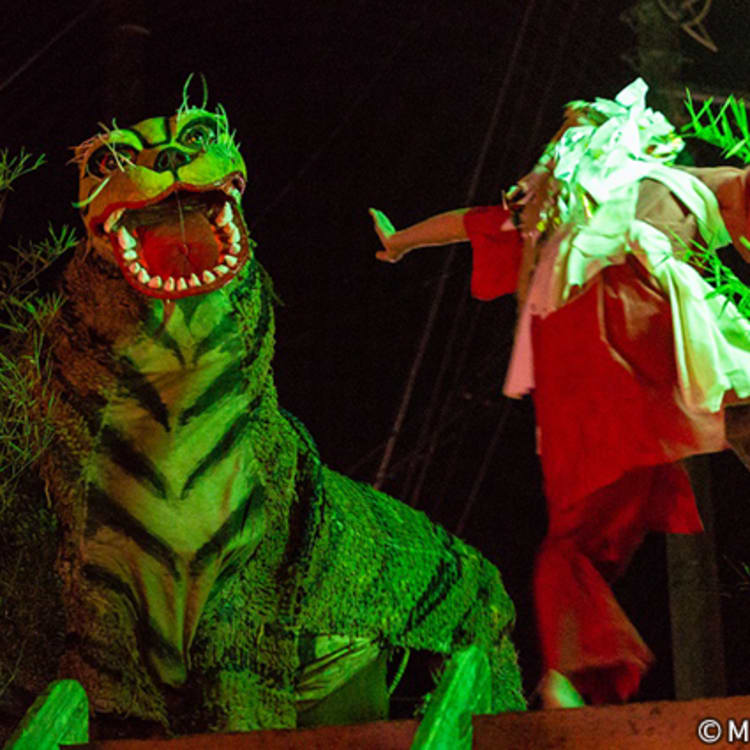
STORY Koina Tiger Dance by JNTO on 09 September 2018
Japan’s Shizuoka Prefecture is famous because it’s “number one” in many regards — it’s home to Japan’s tallest mountain (Mt. Fuji), produces the most spring water in Asia (Kakita River), and is the nation’s largest producer of green tea.
Shizuoka is also famous for its pristine beaches and cultural attractions — and Atami, a sleepy seaside city on the northeastern coast of the Izu Peninsula, is a place where you can relax, swim, and take part in local cultural traditions like the Koina Tora-mai (Tiger Dance).
The Koina Tiger Dance is held every year on the eve of the autumn full moon, and is based on a scene from the play, “The Battles of Coxinga” by Edo-period dramatist Chikamatsu Monzaemon (1653-1725). Lit by moonlight, the performance features a colourful tiger costume (manned by two people) to tell the story of Watanai, a hero who came across a great tiger on his way to a bamboo grove and was able to defeat it and bring it back home alive.
The dance is celebrated alongside the mid-autumn festival – called otsukimi, or moon-viewing party – which is held all across the prefecture. Otsukimi is a traditional Japanese celebration of the harvest moon that dates back to the Heian era (794-1185) when the samurai and local townspeople would watch the full moon and celebrate the harvest.
The otsukimi is typically celebrated on jyugoya (15th night), the 15th day of the 8th month of the lunar calendar — this is usually mid-September by the Julian calendar.


Where can you see the Koina Tiger Dance?

The annual Koina Tiger Dance is held at Kinomiya Shrine on the Koina Coast in Minamiizu Town.
When visiting around mid September, it’s otsukimi (moon-viewing) season, so it is a great time to sample some delicious local seasonal delicacies, including green tea and tsukimi dango, dumplings made from rice flour that are shaped to look like the moon. Other dishes that are associated with the otsukimi are tsukimi soba/udon (soba or udon noodles topped with seaweed and raw egg) and local produce such as taro, chestnuts, and kabocha (Japanese pumpkin). These mid-autumn festivals are usually held in cafes and restaurants with a veranda or open-air view of the moon.
If you’re interested in attending some otsukimi festivals in Shizuoka Prefecture, There are various spots in Hamamatsu City hosting moon-viewing events, some with tea and music.
The Izu Peninsula is famous in Japan for its hot springs, with many baths that overlook the mountains and sea. It’s also a great place to sample fresh seafood and wasabi, a Shizuoka specialty that’s served fresh (you grate your own) at many soba shops. In fact, the prefecture produces about 80% of Japan’s wasabi.
How do you get to the Koina Tiger Dance?
The easiest way to get to Kinomiya Shrine to see the Koina Tiger Dance is take a train to Komiya Station (JR Ito Line), then walk about 5 minutes. Alternatively, you can take a train to Atami Station (JR Tokaido Main Line) and take a 5-minute taxi ride to the shrine, or a 20-minute walk to reach the shrine.
Date: 23 September 2018
Time: 20:00-21:00
Entrance fee: Free

























































